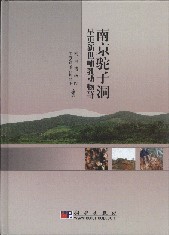|
|
Saturday, November 9, 2024
|
|
|
|
|
The Early Pleistocene mammalian Fauna at Tuozi Cave, Nanjing, China |
|
|
 |
|
Author(s): Nanjing Museum and Institute of Archaeology |
|
Publisher: Science Press
Published Date: 2007
ISBN: 978-7-03-019268-4
Pages: 182
Language: Chinese with English Summary
Type: Book
Cover: Hard Cover
|
|
Our Price: $70.40
Avail: In-Stock |
|
|

Description
1. The Tuozidong fauna is one of the few early Pleistocene mammalian faunas in the lower valleys of the Yangtze River. It includes 6 orders, 14 families, 24 genera and 26 species. The monograph presents the geographic and geological background of the site, and the formation and evolution of the cave. It also describes and compares the fauna listed above in details. Some of them were firstly found in the lower valleys of the Yangtze River. The composition of the fauna indicates that the Tuozidong fauna is mainly composed of the widespread forms with some northern characters, and a few southern forms and transitional forms.
2. Compared with related early Pleidtocene mammalian faunas, the Tuozidong fauna is closer to Renzidong fauna from Fanchang, Anhui Province and Longgupo fauna from Wushan, Chongqing City.
3. One of the important characters of the Tuozidong fauna is that the co-occurrence of hipparion sinense and Equus huanghoensis. It not only implies that in the early Pleistocene Hipparion crossed the Yangtze River, but also expands our knowledge about the distribution scale of H. sinense-Equus fauna which used to be considered limited only to the northern China. The finding helps to determine the early Pleistocene age of the fauna.
4. The findings of the research add a new element for the establishment of the standard profile of Lower Pleistocene in the lower valleys of the Yangtze River and in Jiangning area. The early Pleistocene Tuozidong fauna constitutes, together with the middle Pleistocene hulidong fauna and the late Pleistocene faunas in Nanjing area, a comprehensive Pleistocene biostratigraphic aequence.
5. The Tuozidong fauna is located very close to Huludong Homo erectus fauna, only about 800 meters apart, and the former is evidently earlier in age than the latter. The Tuozidong fauna enhanced our knowledge about the faunal evolution in transitional zone, about the environment and geography in the early Pleistocene. It is also very helpful for understanding the environmental background of migration of ancient human beings in Asia.

|
|